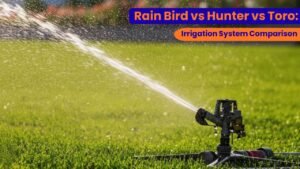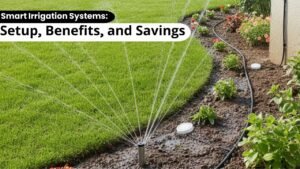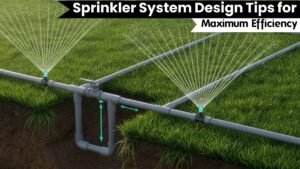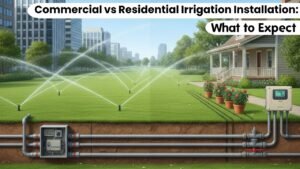First Things First: How to Find Out What Permits You Need
Sprinkler system permits are crucial before starting any installation. Checking local, plumbing, building, and electrical requirements ensures compliance, prevents fines, and avoids costly project delays. In this guide, I’ll walk you through the types of permits you might need, how to apply, and tips for a smooth, legally compliant installation process.
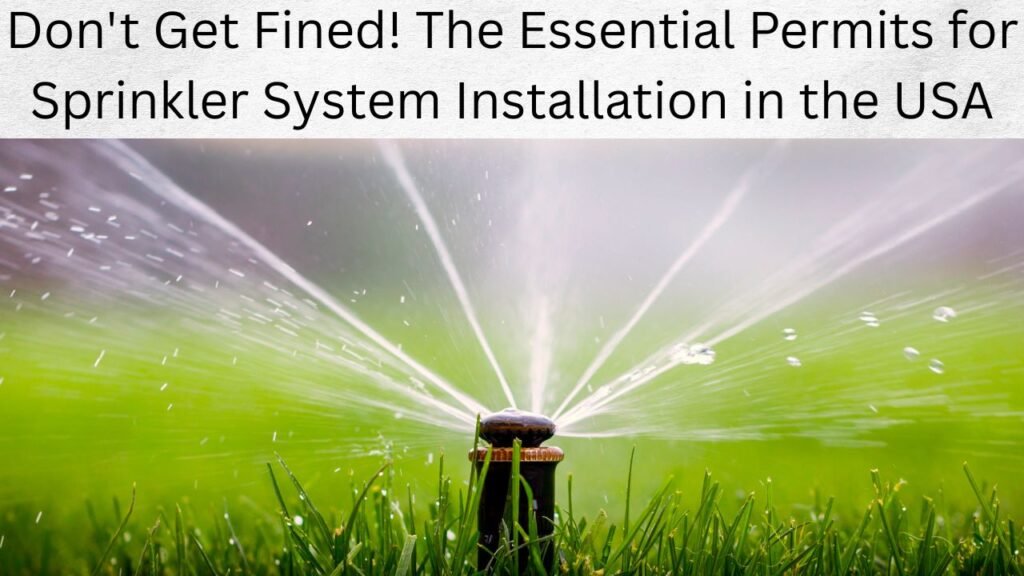
Why Are Permits Necessary?
County Office’s YouTube video below “What Is A Permit?” (March 24, 2025) explains the purpose and process of obtaining permits for construction or home improvement projects. Understanding permits helps homeowners comply with local regulations and avoid fines, ensuring any work, including irrigation installations, is legal and safe.
Permits are essential for several reasons:
- Public health and safety through proper backflow prevention: This protects your drinking water and that of your community.
- Water conservation by aligning with local efficiency standards: This can potentially lower your water bills and helps the environment.
- Code compliance with setbacks and zoning restrictions: This prevents future disputes with neighbors or the city, protecting your property rights.
- Liability protection in case of property damage or accidents: This safeguards you financially if issues arise from an unpermitted installation.
Types of Permits You Might Need
Local/Municipal Permits
Most sprinkler installations require local permits. These ensure your system complies with city or county regulations.
Plumbing Permits
If your system connects to the potable water supply, a plumbing permit is typically required. This ensures proper backflow prevention to protect water quality.
Building Permits
Significant alterations to your property, like trenching or structural changes, may necessitate a building permit.
Electrical Permits
If your sprinkler system includes electrical components, such as timers or controllers, an electrical permit might be needed.
State Permits
In some states, additional permits may be required, especially if your system impacts water rights or environmental factors.
The Permit Application Process: A Checklist
To obtain the necessary permits, follow these general steps:
- Identify your local authority: Contact your city or county building department.
- Gather required documents: Prepare site plans, system designs, product specifications, and backflow prevention details.
- Submit your application: This can often be done online or in person.
- Pay the fee: Permit fees vary by location and project scope.
- Schedule and pass any required inspections: Ensure your system complies with all regulations.
Factors Influencing Permit Requirements
Residential vs. Commercial Installations
Electrician U’s YouTube video below “What’s the Difference Between Commercial and Residential …” (March 1, 2023) breaks down the key distinctions in design, load, and safety requirements between commercial and residential electrical systems. Understanding these differences helps homeowners and contractors plan irrigation and other home projects more effectively.
Commercial systems often serve larger areas and have more complex plumbing and water usage needs, thus requiring stricter permit scrutiny.
System Size and Complexity
Larger or more intricate systems may trigger additional permit requirements due to their potential impact on infrastructure and resources.
Local Regulations and Ordinances
Permit requirements can vary significantly based on local laws, zoning regulations, and homeowners’ association rules.
Consequences of Skipping the Permit
Failing to obtain the necessary permits can lead to serious repercussions:
- Fines and penalties: You may be charged $500 or more daily for violating building permit laws.
- Stop-work orders: Authorities can halt your project until proper permits are secured.
- Requirement to remove the system: Unpermitted installations might need to be dismantled, leading to additional costs.
- Insurance complications: Unpermitted work can result in denied claims or policy cancellations.
Tips for a Smooth Permit Process
- Start your permit research immediately after deciding to install a system: Early planning helps avoid delays.
- Consult with a licensed contractor early in the process: They can navigate the permit landscape for you.
- Keep detailed records: Maintain copies of all applications, approvals, and correspondence.
Key Takeaways
- Always check with your local building department first.
- Understand the specific permits required for your system type.
- Don’t risk fines or removal – obtain necessary approvals.
Final Thoughts
The key takeaway? Always verify your local sprinkler system permit requirements before starting any installation. It’s the best way to avoid costly mistakes and ensure a smooth, legally compliant project.
